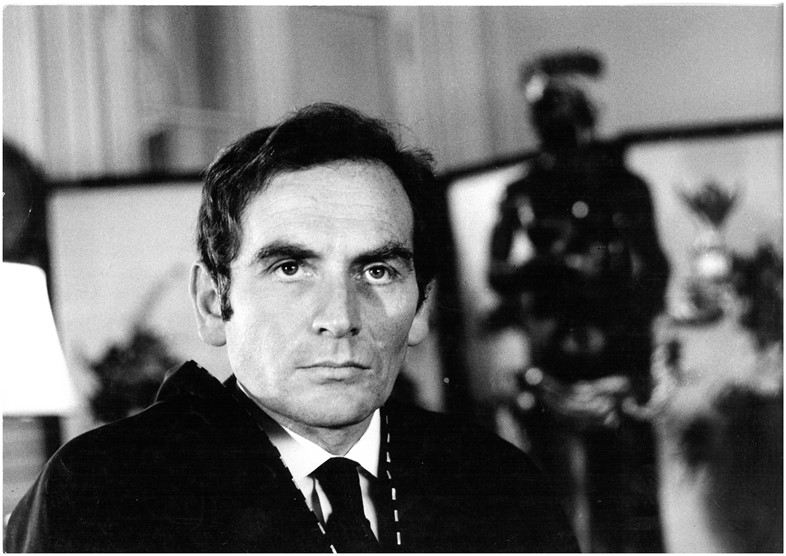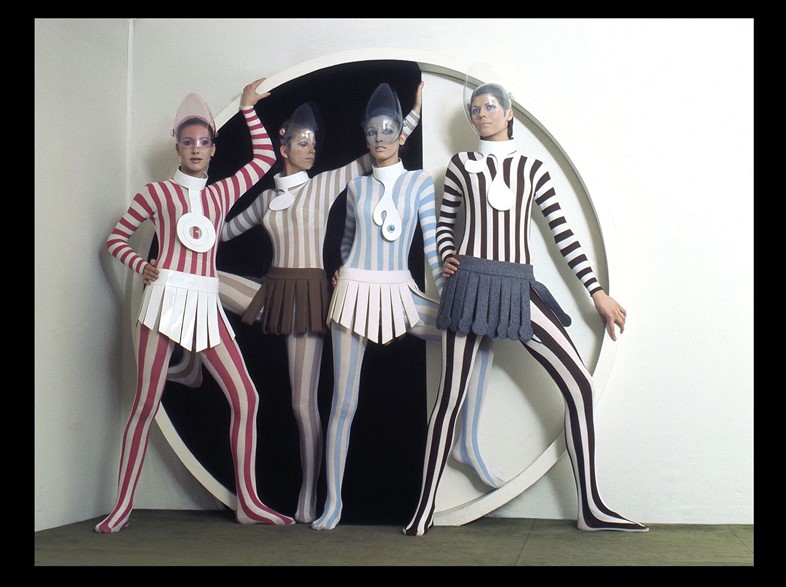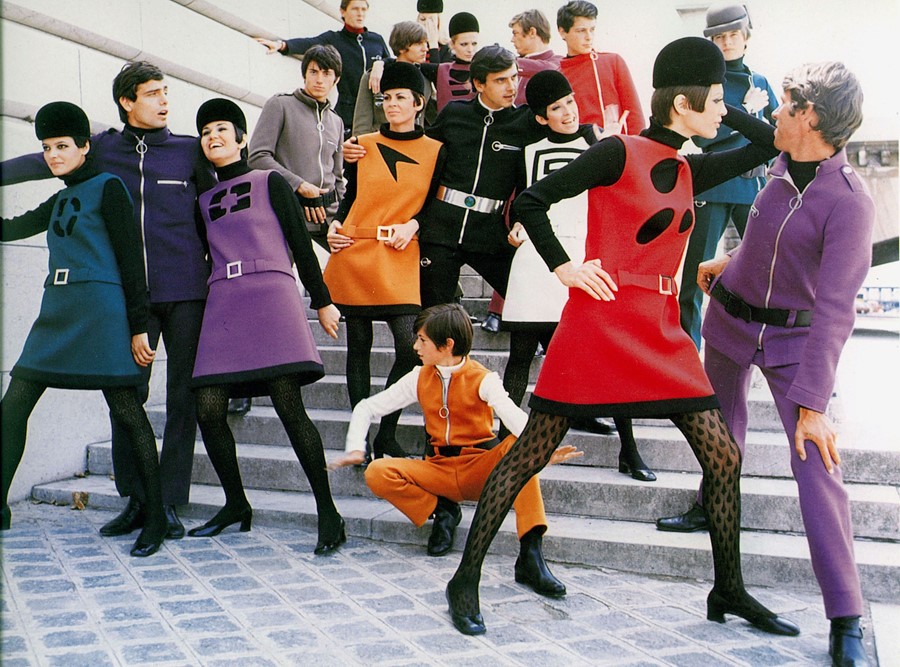With input from the likes of Naomi Campbell, Sharon Stone and Jean Paul Gaultier, House of Cardin explores the influence of 98-year-old Pierre Cardin. We speak to the documentary’s unlikely American directors Todd Hughes and P. David Ebersole
“When I was young I had a pair of Pierre Cardin skis that I had to fight my father over,” says Todd Hughes, one of the filmmakers behind new documentary House of Cardin. “They were expensive and he said we were just paying for a name.” Hughes’ husband and co-director P. David Ebersole’s earliest Cardin memory meanwhile, was as a shop assistant at Hollywood’s Broadway department store, where the Pierre Cardin wares were among those precious items kept behind glass, accessed with a key. Both wore the cologne.
This preoccupation with the French fashion house has endured – speaking to AnOther by phone from Palm Springs, they describe the all-consuming task of tracing a specific silver coffee table – but until recently neither had fully entertained that Cardin might be a person. It was while working in Leeds on the 2017 documentary Mansfield 66/67, their visas about to expire, that they headed to France and spent a day searching flea markets for vinyl by the Les Disques Pierre Cardin label (an obsession at the time). Later, sharing their wins (a single record) with a Cardin shop assistant, their enthusiasm was replaced by curiosity when the assistant announced: “Oh, Monsieur Cardin loves to meet people who appreciate him!” Advised on how to meet the then 94-year-old, a year later they flew into Paris and headed to the flagship store, hoping at best to get a selfie: by 2pm they were drinking coffee with Cardin and had signed on to make a film.

“We were in Paris because our movie was showing, so [Cardin’s team] knew we were documentary filmmakers and were actually the ones suggesting we should make a documentary. We were just like ‘well I think we’re doing a documentary with Pierre Cardin’. We couldn’t believe it,” says Ebersole. “When we met Pierre it was kismet,” concurs Hughes. “We really hit it off and all got very excited. What a golden opportunity.”
Interested in “everything”, with House of Cardin the filmmakers carefully trace the designer’s trajectory, delving into each facet of a rich career, from his arrival in Paris and setting up his own label (following a stint at Christian Dior), to buying the well-known French restaurant Maxim’s and opening his theatre, Espace Cardin in 1970. Romantic and business relationships are given airtime, as is his over-licensing and his work with Japanese model Hiroko Matsumoto; his subsequent impact on diversifying the catwalk, and his relationship with China. “One day, Chinese children were asked on a test, who is the president of France?” notes jewellery designer Siti Zheng in the latter segment. “Many answered, Pierre Cardin.”
Travelling between the US, Asia and Europe – “it couldn’t be made today,” says Ebersole, alluding to the current pandemic, “it was a travelogue in and of itself” – the duo followed Cardin for a year, first interviewing him at Maxim’s. “It was very nerve-wracking. There were a lot of people because we didn’t speak French,” remembers Hughes. “It went quickly and then Pierre came up to us and said ‘you guys are professionals, I’m really impressed. Do you want to come upstairs and see my Art Nouveau museum?’ That day we discovered this guy did not like to be in a chair with a camera, he liked to be free to walk around and talk. That was the first inkling we got of ‘ooh, we’ll get to this guy eventually’.”

In addition to speaking with Cardin and revisiting archive footage from the past seven decades, the filmmakers tapped well-known figures from across fashion and culture, Naomi Campbell, Jenny Shimizu and Kenzo Takada among them. “People love Pierre Cardin,” enthuses Hughes. “Jean Paul Gaultier, who features, said ‘absolutely, you must give me two hours because I’ve got a lot to say’.” Gaultier worked with Cardin in his early teens, securing the job on his 18th birthday. “In our research we would come across something interesting – we’d read a story with Sharon Stone, just a little thing in an interview,” explains Ebersole. “We wanted to create an exciting collection of people. Even when going to China, we would say to our producers ‘do you think we could get in touch with so and so, we know they have a relationship with Cardin’.”
Echoing the brand’s global presence, the film features five languages, an early decision by the filmmakers to help people best express themselves. “It amplified the challenge of making it,” acknowledges Ebersole, “but Pierre Cardin is international, and we wanted the film to have that large scope.” Elsewhere, there were murmurs early on about their legitimacy. “This was heavy on our minds because this is a French monument, the last living courtier employing two Americans to tell his story,” says Hughes. “We went to French financiers and people thought we were not the people to tell this story. At one point people wanted to make a French version with a different director to go with the American one. [But] you know, Pierre chose us for a reason.” The duo ultimately fought their corner, and the result is an illuminating documentary that reacquaints contemporary audiences with a legacy far beyond its more recent incarnation.
House of Cardin is available on demand now.
